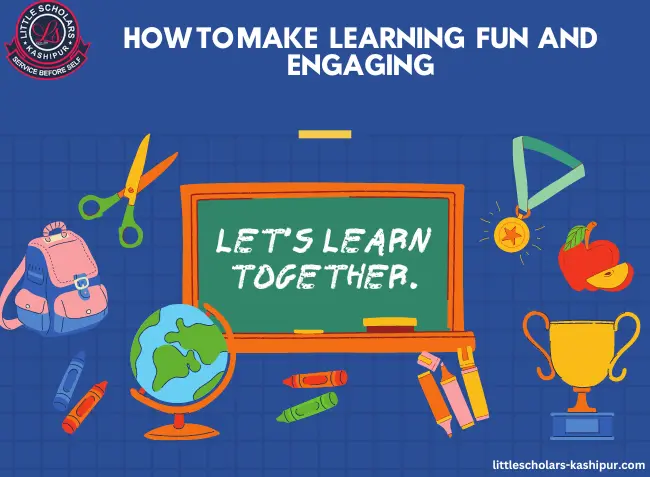How to make learning fun and engaging is a question many educators and parents grapple with. In an era where distractions are plentiful, finding ways to capture and maintain students' interest is crucial. This guide explores various methods to make learning enjoyable and effective for students of all ages.
Understanding the Importance of Engaging Learning
Engaging learning is not just about making lessons entertaining; it's about fostering a deep, intrinsic motivation for learning. When students are engaged, they are more likely to retain information, participate actively, and develop a lifelong love for learning.
Learning Outcomes: Discovering the Power of Education
Incorporating Interactive Activities
Games and Quizzes
Incorporating educational games and quizzes can make learning more interactive. Games like educational bingo or trivia can reinforce concepts in a fun way.
Group Projects
Collaborative projects encourage teamwork and allow students to learn from one another. Group activities can also help students develop communication and problem-solving skills.
Using Technology in Learning
Educational Apps
There are numerous educational apps available that make learning interactive and fun. Apps like Duolingo for languages or Khan Academy for various subjects can enhance the learning experience.
Virtual Reality
Virtual reality can provide immersive learning experiences. For example, students can take virtual field trips to historical sites or explore scientific concepts in a 3D environment.
Creative Teaching Methods
Storytelling
Storytelling can make complex concepts easier to understand and remember. Teachers can use stories to illustrate lessons and engage students emotionally.
Role-Playing
Role-playing activities allow students to step into different characters' shoes, enhancing their understanding of historical events, literary works, or scientific phenomena.
Personalized Learning Experiences
Adapting to Learning Styles
Understanding and adapting to different learning styles—visual, auditory, and kinesthetic—can make learning more effective. Tailoring lessons to meet these styles can help students grasp concepts better.
Individualized Learning Plans
Creating personalized learning plans based on students' strengths, weaknesses, and interests can foster a more engaging learning environment.
Encouraging Student Participation
Discussion-Based Learning
Encouraging open discussions in the classroom helps students develop critical thinking skills. It also makes them feel more involved in the learning process.
Peer Teaching
Allowing students to teach their peers can reinforce their own understanding of the material. Peer teaching can be especially effective in subjects like math and science.
Making Learning Relatable
Real-World Applications
Connecting lessons to real-world applications can make learning more relevant. For example, teaching math through everyday activities like shopping or cooking can enhance understanding.
Connecting to Interests
Incorporating students' interests into lessons can make learning more engaging. For example, using sports statistics to teach math or popular music to teach language arts.
Incorporating Arts and Crafts
Hands-On Projects
Hands-on projects, such as building models or creating artwork, can make abstract concepts tangible and memorable.
Art Integration
Integrating art into subjects like history or science can make learning more engaging. For example, students can create historical dioramas or scientific illustrations.
Utilizing Outdoor Learning
Nature Walks
Taking students on nature walks can provide practical learning experiences. Nature walks can be used to teach subjects like biology, geology, and environmental science.
Outdoor Experiments
Conducting experiments outdoors can make science lessons more exciting and hands-on. For example, studying plant growth or weather patterns in a natural setting.
Formative Assessment: Boost Learning with Effective Strategies
Incorporating Music and Movement
Educational Songs
Using educational songs can help students remember information more easily. Songs about multiplication tables or grammar rules can make learning fun.
Kinesthetic Learning
Incorporating movement into lessons can help kinesthetic learners. Activities like acting out historical events or using physical objects to demonstrate math concepts can enhance understanding.
Building a Positive Learning Environment
Encouragement and Support
Creating a supportive classroom environment where students feel safe to express themselves can foster engagement. Positive reinforcement and encouragement can motivate students to participate actively.
Classroom Setup
Arranging the classroom to promote interaction and collaboration can enhance the learning experience. Flexible seating arrangements and interactive displays can make the classroom more engaging.
Incorporating Humor in Teaching
Educational Jokes
Using humour in lessons can make learning more enjoyable. Educational jokes or funny anecdotes related to the subject matter can lighten the mood and keep students engaged.
Funny Stories
Sharing funny stories or experiences can make the learning environment more relaxed and enjoyable. Humour can be a powerful tool to capture students' attention.
Gamification of Learning
Points and Rewards
Gamifying lessons by incorporating points and rewards can motivate students. Systems like earning points for correct answers or completing tasks can make learning competitive and fun.
Learning Competitions
Organizing learning competitions, such as spelling bees or math challenges, can make studying more exciting and engaging.
Regular Feedback and Assessment
Constructive Feedback
Providing regular and constructive feedback can help students improve and stay engaged. Highlighting strengths and offering specific suggestions for improvement can be motivating.
Self-Assessment
Encouraging students to assess their own work can foster self-awareness and responsibility. Self-assessment can also help students set personal learning goals.
Case Studies of Successful Fun Learning
Examples from Different Schools
Exploring case studies of schools that have successfully implemented engaging learning strategies can provide valuable insights and inspiration.
Lessons Learned
Learning from the successes and challenges faced by other educators can help refine your own approach to making learning fun and engaging.
Exploring the Wonders of Biodiversity Hotspots: Preserving Nature's Treasures
Conclusion
Making learning fun and engaging requires creativity, adaptability, and a deep understanding of your students' needs and interests. By incorporating the strategies outlined in this guide, educators can create a dynamic learning environment that motivates and inspires students to achieve their full potential.




